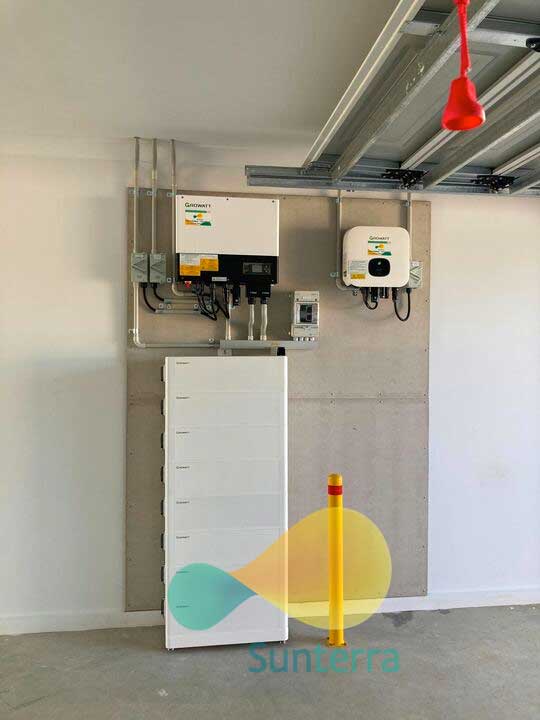Now we can see there are two Growatt inverters on the wall, why? This is because we need 3 MPPTs in series connection for this case. This house’s roof has been put 38 Jinko 475 panels in 3 different orientations, including 12 to east, 8 to north and 18 to east. So based on this situation, we can’t just use one inverter as two maximum MPPT in each single phase of inverter unless use three phase inverter like 10000TL-X.

Why can’t the lines in two directions be strung together?
This refers to parallel connection. Although you can do it, there are still some unstable factors such as voltage may not be equal. It also cause inverter not working properly.
Most advantages of two inverters installed together.
Increased power output: By installing two inverters together, you can increase the amount of power that is available to you. This can be useful in situations where you have high power demands, such as in a large home or business.
Improved efficiency: In some cases, installing two inverters together can improve the overall efficiency of your power system. This is because each inverter can operate at a more efficient level when it is not running at its maximum capacity.
In this case they are two separate systems! Yes, having two inverters installed can provide a backup in case one of them fails. This system size is 38 panels * 475 = 18.05kW, so two inverters can run at 10kW full power of PV generation, and meanwhile you also have 10kW AC output power
However, you should distinguish between DC and AC inverters. If you have DC + AC inverter model, you probably just enjoy the output instead of generation. For example, 5kW single phase DC inverter and 3kW AC-coupled inverter means you can get 8kW AC output (parts of power from the battery), but just get 5kW PV generation. Also, if any one of the inverters fails, it will affect power generation or battery charging.
Do two inverters need to be connected to one meter?
The answer to this question depends on the specific installation and the local regulations in your area. In general, there are two main types of inverter installations: single inverter and multiple inverter.
In a single inverter installation, there is only one inverter that is connected to the meter. The inverter converts the DC power from the solar panels into AC power that is fed into the utility grid through the meter. In this case, there is no need for multiple inverters to be connected to a single meter.
In a multiple inverter installation, there are two or more inverters that are connected together and then connected to the meter. This type of installation is typically used when there are more solar panels than a single inverter can handle, or when multiple inverters are needed for redundancy or to provide three-phase power. In this case, the inverters are typically connected in parallel and then connected to a single point of connection (POC) on the electrical panel, which is then connected to the meter.
The specific requirements for connecting multiple inverters to a single meter will depend on the local regulations in your area. It’s important to consult with a licensed electrician or solar installer to ensure that your installation meets all the necessary safety and code requirements.

